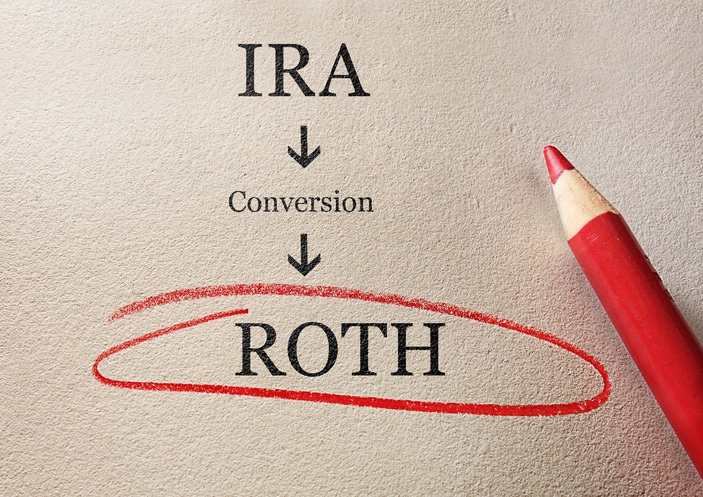The 4% Rule for Retirement Withdrawals: Why It Falls Short and What Works Better
Introduction
If you’re planning for retirement, you’ve almost certainly encountered the 4% rule—the widely cited guideline suggesting you can safely withdraw 4% of your portfolio in your first year of retirement, adjust for inflation each year after, and expect your money to last 30 years.
It’s simple. It’s memorable. And for many retirees today, it’s unnecessarily restrictive—or worse, potentially risky.
The reality is that retirement spending isn’t static. Markets aren’t predictable. And your financial needs will likely shift dramatically over a 30-year retirement. Following a rigid withdrawal formula designed in 1994 may mean sacrificing experiences in your healthiest years or running short when you need funds most.
If you’re approaching retirement with a seven-figure portfolio and wondering whether you can actually afford the retirement you’ve envisioned, understanding why the 4% rule falls short—and what works better—could be the difference between a retirement you tolerate and one you truly enjoy.
Understanding the 4% Rule: Origins and Original Intent
Before we discuss its limitations, it’s important to understand what the 4% rule actually says and the context in which it was developed.
What William Bengen Actually Discovered
Financial planner William Bengen published his research in 1994, analyzing historical market returns from 1926 onward. His question: What withdrawal rate would have survived the worst historical market periods?
His findings:
- A retiree with a 50/50 stock-bond portfolio could have safely withdrawn 4% of their initial portfolio balance
- Adjusted that amount annually for inflation
- And not run out of money over a 30-year retirement period
- Even if they retired at the worst possible historical moment (like 1929 or 1968)
Important context: This was a floor, not a recommendation. Bengen was identifying the minimum safe withdrawal rate during the worst historical scenarios—not suggesting this was optimal for all retirees.
Why It Became the Default Standard
The 4% rule gained widespread adoption because it offered something financial planning desperately needed: a simple, memorable guideline that seemed conservative and safe.
For many financial advisors working with clients in the 1990s and 2000s, it provided:
- Easy communication (“Just don’t withdraw more than 4% per year”)
- Historical backing from rigorous research
- Built-in margin of safety
- A starting point for retirement income conversations
Five Critical Problems with the 4% Rule in Today’s Environment
While the 4% rule provided a useful framework decades ago, today’s retirement landscape has changed in ways that make rigid adherence problematic.
Problem #1: Retirement Timelines Have Extended
The 4% rule assumes a 30-year retirement. But according to current Social Security Administration data, a healthy 65-year-old couple today has a 50% chance that at least one spouse will live past age 92—and a meaningful probability of living past 95.
What this means: Your money may need to last 30+ years, which the original research didn’t fully account for.
Problem #2: The “Retirement Spending Smile” Reality
One of the 4% rule’s biggest flaws is assuming you’ll spend the same inflation-adjusted amount every year of retirement. Real spending patterns look very different.
Research shows three distinct retirement spending phases:
Active Years (65-75):
- Higher discretionary spending on travel, hobbies, and major experiences
- Home improvements and upgrades
- Helping adult children or grandchildren
- Generally the highest spending period
Transitional Years (75-85):
- Spending often declines 15-25% from early retirement
- Less travel, more home-based activities
- Reduced dining out and entertainment
- Often called the “go-slow” years
Later Years (85+):
- Healthcare and assistance costs can increase dramatically
- Long-term care expenses may spike
- Other discretionary spending remains low
- The “no-go” years with potential care needs
The problem: The 4% rule forces you to under-spend in your active years (when experiences matter most) while potentially over-accumulating assets you may never use—or leaving you exposed if healthcare costs surge later.
Problem #3: Sequence of Returns Risk
This is the technical term for a simple concept: the order in which investment returns occur matters enormously for withdrawal strategies.
Example scenario:
Retiree A experiences strong market returns in years 1-5 of retirement, then poor returns in years 6-10.
Retiree B experiences the exact same returns, just in reverse order: poor returns in years 1-5, strong returns in years 6-10.
Even though their average returns are identical, Retiree B’s portfolio will likely be depleted much faster because they’re withdrawing during the downturn, selling assets at depressed prices when the portfolio is at its smallest.
The 4% rule doesn’t adapt to this reality—you’re mechanically taking the same inflation-adjusted withdrawal whether the market is up 25% or down 25%.
Problem #4: Today’s Market Environment Differs from Historical Averages
Bengen’s research was based on historical data when:
- Bond yields were higher (providing more reliable income)
- Stock valuations were often lower (offering better forward returns)
- Inflation patterns were different
- International diversification was less common
Today’s environment of lower expected returns may make the 4% rule less safe than historical data suggests—or conversely, strong market performance might mean you’re unnecessarily restricting spending.
Problem #5: It Ignores Other Income Sources and Tax Planning
The 4% rule treats your portfolio in isolation, but most retirees have:
- Social Security benefits starting at some point
- Pension income (for some)
- Required Minimum Distributions (RMDs) beginning at age 73
- Potentially rental income or part-time work
A static 4% withdrawal doesn’t integrate with these changing income sources or optimize for tax efficiency. In our practice, we frequently see retirees who could spend significantly more in their 60s (before Social Security and RMDs kick in) while maintaining the same total income throughout retirement.
A Better Approach: Risk-Based Guardrails for Retirement Income
Rather than following a rigid percentage, Income Lab’s guardrails-based approach focuses on the question retirees actually care about: “How much can I spend?”—not abstract statistics like “What’s my probability of success?”
The Philosophy Behind Guardrails
At its core, retirement planning should help you live the best, most meaningful, and fulfilling life you can, given your resources and goals. Traditional approaches using probability of success (PoS) often create unnecessary anxiety and lead to underspending and regret.
Think about it: when you meet with a financial advisor, you don’t ask, “What’s my probability of success?” You ask practical questions like:
- “How much can I spend each year?”
- “Am I going to be okay?”
- “When the market drops, what should I do?”
Guardrails answer these questions with specific dollar amounts and clear action triggers—not abstract percentages.
How Income Lab’s Risk-Based Guardrails Work
Rather than managing to an arbitrary portfolio withdrawal percentage, Income Lab’s methodology manages two specific risks:
1. The Risk of Overspending (Lower Guardrail)
This defines a specific portfolio threshold below which you’d need to reduce spending if portfolio performance disappoints. It protects you from running out of money.
2. The Risk of Underspending (Upper Guardrail)
This defines a specific portfolio threshold above which you could safely increase spending if portfolio performance exceeds expectations. It protects you from unnecessary sacrifice.
These guardrails aren’t arbitrary—they’re calculated based on your complete financial picture and updated regularly as conditions change.
The Core Components
Setting Your Initial Spending Range
Income Lab calculates a sustainable income range based on:
- Your total resources (portfolio, home equity, other assets)
- All income sources (Social Security, pensions, rental income)
- Your age and life expectancy
- Your goals (legacy wishes, major planned expenses)
- Your spending flexibility and risk tolerance
This gives you a clear starting point: “Based on everything we know today, you can sustainably spend $X per year.”
Establishing Portfolio-Based Guardrails
Income Lab expresses guardrails as specific portfolio values that trigger adjustments:
- Lower guardrail: “If your portfolio falls to $X, reduce spending by $Y temporarily”
- Upper guardrail: “If your portfolio grows to $Z, you can increase spending by $W”
- Current baseline: Your target spending amount based on today’s conditions
This makes adjustments concrete and understandable, not abstract.
Monthly Inflation Monitoring
Unlike the traditional 4% rule that assumes simple inflation adjustments, Income Lab:
- Monitors actual inflation monthly using CPI-U data
- Tracks whether your purchasing power is being maintained
- Only triggers adjustments when they exceed a meaningful “Minimum Income Change” threshold
- Avoids constant minor tweaks from month-to-month fluctuations
When cumulative inflation exceeds the threshold, the system flags that a nominal income adjustment is warranted—ensuring your real spending power stays intact.
“Needs Attention” Notifications
Rather than constantly worrying whether you’re on track, the system alerts you when:
- Inflation has accumulated enough to warrant an adjustment
- Portfolio performance has moved you close to a guardrail
- Life changes (like Social Security beginning) require plan updates
This creates structured engagement without constant anxiety.
Why This Approach Works Better
Think of it like a ship’s navigation system:
Traditional 4% Rule Approach:
- “There’s an X% chance you’ll sink before reaching your destination”
- No guidance on what to do when storms hit
- Creates anxiety without actionable information
Guardrails Approach:
- “Here are your safe boundaries (specific portfolio values)”
- “Here’s your current course (specific spending amount)”
- “When you approach a boundary, here’s exactly what to adjust (specific dollar amounts)”
- Provides confidence through clear, credible planning
The guardrails methodology incorporates all the complex risks—sequence of returns, inflation timing, longevity—but translates them into simple, actionable guidance: spend this amount this year, and we’ll adjust as conditions change.
Real-World Example: How Income Lab’s Guardrails Work in Practice
Let me show you how this methodology actually works using real Income Lab calculations.
Meet Linda and Robert
Situation:
- Both age 66, recently retired
- $1.8M investment portfolio (70% stocks, 30% bonds)
- Robert delaying Social Security until 70 ($42,000/year when claimed)
- Linda already claiming Social Security at 66 ($28,000/year)
- Desired active retirement lifestyle including regular travel
- Willing to make temporary adjustments if markets struggle
- Moderate legacy goal but lifestyle takes priority
The 4% Rule Would Say:
Years 1-4 (Before Robert’s Social Security):
- Safe portfolio withdrawal: $72,000 (4% of $1.8M)
- Plus Linda’s Social Security: $28,000
- Total income available: $100,000/year
This forces a difficult choice:
- Accept a constrained lifestyle despite having $1.8M saved, or
- Exceed the “safe” 4% rate and worry about running out of money
After Robert claims at 70:
- Portfolio withdrawal: ~$77,000 (inflation-adjusted 4%)
- Combined Social Security: ~$72,000
- Total income jumps to ~$149,000
The problem: Artificially restricted spending during their healthiest, most active years (66-70), followed by excess income when spending naturally declines.
What Income Lab Actually Calculated
When we ran Linda and Robert’s situation through Income Lab, here’s what the system determined they could sustainably spend:
Current Sustainable Income: $146,000/year
Breaking this down:
- Portfolio withdrawal: $118,000/year (6.6% initial rate)
- Linda’s Social Security: $28,000/year
- Total annual income: $146,000
Yes, you read that correctly—$46,000 more per year than the 4% rule would allow.
The Guardrails (Portfolio Value Thresholds):
Upper Guardrail: $1,956,000
- If their portfolio grows to this level, it triggers a spending increase
- New income: $156,800/year (+$10,800)
- This captures prosperity—when markets perform well, they can spend more
Lower Guardrail: $1,395,000
- If their portfolio declines to this level, it triggers a spending decrease
- New income: $138,800/year (-$7,200)
- This is temporary while waiting for portfolio recovery
- Still $38,800 more than the 4% rule would have allowed
What this means in practice:
- They can spend $146,000 comfortably right now
- If markets surge, they increase to $156,800
- If markets struggle, they temporarily reduce to $138,800—still a very comfortable lifestyle
- The guardrails are wide enough to avoid constant adjustments, but tight enough to protect long-term sustainability
Comparing the First Four Years: 4% Rule vs. Income Lab
Let me show you how different these approaches really are.
Under the Strict 4% Rule:
| Year | Portfolio Start | Withdrawal | Linda SS | Total Income | Portfolio End (7% growth) |
|---|---|---|---|---|---|
| 1 | $1,800,000 | $72,000 | $28,000 | $100,000 | $1,854,000 |
| 2 | $1,854,000 | $74,000 | $29,000 | $103,000 | $1,909,000 |
| 3 | $1,909,000 | $76,000 | $30,000 | $106,000 | $1,965,000 |
| 4 | $1,965,000 | $78,000 | $31,000 | $109,000 | $2,022,000 |
4-year totals:
- Total income: ~$418,000
- Experiences: Constrained lifestyle, many trips postponed
- Portfolio after 4 years: $2,022,000 (grew $222,000)
Under Income Lab’s Guardrails:
| Year | Portfolio Start | Withdrawal | Linda SS | Total Income | Portfolio End | Guardrail Status |
|---|---|---|---|---|---|---|
| 1 | $1,800,000 | $118,000 | $28,000 | $146,000 | $1,808,000 | Within range ✓ |
| 2 | $1,808,000 | $121,000 | $29,000 | $150,000 | $1,815,000 | Within range ✓ |
| 3 | $1,815,000 | $124,000 | $30,000 | $154,000 | $1,822,000 | Within range ✓ |
| 4 | $1,822,000 | $127,000 | $31,000 | $158,000 | $1,829,000 | Within range ✓ |
4-year totals:
- Total income: ~$608,000 ($190,000 more than 4% rule!)
- Experiences: All planned travel completed, home improvements done
- Portfolio after 4 years: $1,829,000
- Never triggered either guardrail in this scenario
The stunning reality: They spent nearly $50,000 more per year than the 4% rule allowed, and their portfolio still grew by $29,000 over four years (assuming moderate 7% average returns).
What Happens When Markets Don’t Cooperate
Let’s replay Year 2 with a market correction to show how the guardrails actually protect them:
Year 2 (Market Correction Scenario):
- Year 1 ends with portfolio at $1,808,000
- Year 2: Market drops -22%
- After withdrawal of $121,000: Portfolio value = $1,289,000
Income Lab Alert: Lower Guardrail Triggered
Portfolio has fallen below $1,395,000 threshold.
Recommended Action: Reduce spending by $7,200
- New income target: $138,800/year
- What this means practically:
- Skip one international trip this year
- Reduce dining out frequency slightly
- Postpone one discretionary home project
- Still maintain core lifestyle at $138,800
Year 3 (Recovery):
- Market recovers +18%
- Portfolio rebuilds to $1,428,000
- Back above lower guardrail
- Income restored to $146,000 baseline
The key difference: Instead of panicking about “staying the course” or wondering if they should cut spending, they had a predefined plan with specific dollar amounts. When the lower guardrail was hit, they knew exactly what to do and by how much to adjust.
Compare this to the 4% rule retiree experiencing the same correction:
- No guidance on whether to adjust
- Either blindly continue withdrawing (risking portfolio depletion)
- Or panic and over-correct (sacrificing unnecessarily)
Year 5: Robert’s Social Security Begins
When Robert claims Social Security at age 70, everything changes again. Income Lab recalculates the entire plan.
New income structure:
- Portfolio withdrawal needed: Drops to ~$76,000/year (down from $127,000)
- Robert’s Social Security: $42,000/year
- Linda’s Social Security: $32,000/year (inflation-adjusted)
- New total income: $150,000/year
New guardrails calculated by Income Lab:
- Because Social Security now provides $74,000 of guaranteed income, the portfolio burden is dramatically reduced
- Portfolio can now support the same lifestyle with much lower withdrawals
- Long-term sustainability improves substantially
Portfolio balance at age 70: Approximately $1,850,000—essentially the same as they started with, despite five years of withdrawals that averaged $122,000/year (64% higher than the 4% rule).
The Bottom Line: What the Numbers Actually Show
4% Rule over first 5 years:
- Average annual income: ~$106,000
- Total withdrawn from portfolio: ~$380,000
- Portfolio at year 5: ~$2,050,000
- Lifestyle: Constrained spending, missed experiences
- Outcome: Large portfolio growth they never got to enjoy during active years
Income Lab Guardrails over first 5 years:
- Average annual income: ~$151,000 (42% higher)
- Total withdrawn from portfolio: ~$615,000 ($235,000 more spent)
- Portfolio at year 5: ~$1,850,000
- Lifestyle: Fully lived active retirement years
- Outcome: Slightly smaller portfolio but zero regrets
Both approaches are sustainable long-term. The difference is that Income Lab recognized:
- Robert’s large Social Security benefit was coming at age 70
- The portfolio only needed to be the “workhorse” for 4-5 years
- They could safely front-load spending during their healthiest years
- Specific guardrails provided protection if markets disappointed
This is the power of dynamic planning: maximizing life experiences within sustainable boundaries, backed by math, not emotion.
Not sure if you’re missing anything in your retirement plan?
These 3 free checklists cover retirement planning, tax strategies, and important financial deadlines—so you can make informed decisions with confidence.
When Simple Rules Still Make Sense
To be fair, the 4% rule isn’t wrong for everyone. It can work well if:
- You value maximum simplicity above all else and accept the trade-offs
- You’re extremely risk-averse and prefer lower spending to any possibility of adjustments
- You have minimal spending flexibility due to fixed obligations
- You retired during a market peak and want extra conservatism
- You have no other income sources coming later in retirement
The 4% rule’s biggest value is providing a conservative baseline. It’s not that it’s wrong—it’s that it’s often unnecessarily restrictive for people with flexibility and multiple income sources.
Implementing a Guardrails Strategy: What You Need
Moving from a static withdrawal percentage to dynamic income guardrails requires:
Professional Planning Software
Sophisticated tools like Income Lab that can:
- Model all income sources and timing
- Calculate risk-based spending boundaries
- Monitor inflation and portfolio performance monthly
- Generate “Needs Attention” alerts when adjustments are warranted
- Recalculate guardrails as life circumstances change
Annual Planning Reviews
Structured engagement to:
- Review whether portfolio is tracking within guardrails
- Adjust for major life changes
- Coordinate with tax planning opportunities
- Update Social Security and other income projections
- Assess whether spending adjustments are needed
Spending Categorization
Clear understanding of:
- Non-negotiable expenses: Housing, insurance, healthcare, basic needs
- Core discretionary: Regular travel, dining, hobbies (moderate flexibility)
- Enhanced lifestyle: Major trips, luxury purchases, gifts (high flexibility)
When a lower guardrail is approached, you’re adjusting the flexible categories—not cutting essentials.
Realistic Expectations About Adjustments
Understanding that:
- Markets fluctuate—occasional spending adjustments are normal and expected
- Adjustments are triggered by predefined guardrails, not emotion or panic
- The goal is sustainable lifestyle optimization, not maximum spending
- Small adjustments today prevent major problems tomorrow
- You’re trading perfect predictability for higher average spending
Three Steps You Can Take Right Now
Even without sophisticated software, you can move toward a better withdrawal approach:
Step 1: Map Your Future Income Sources
Create a simple timeline showing when different income sources begin:
- Ages 66-70: Portfolio + partial Social Security (if claimed early)
- Ages 70-73: Portfolio + full Social Security (if delayed)
- Ages 73+: Portfolio + Social Security + Required Minimum Distributions
Understanding when income sources turn on reveals where your portfolio burden is heaviest—often allowing higher early withdrawals than the 4% rule suggests.
Step 2: Categorize Your Spending Flexibility
Calculate your “adjustment capacity”:
- Fixed costs (housing, insurance, property tax, basic healthcare): $______
- Moderate flexibility (regular travel, dining, entertainment, hobbies): $______
- High flexibility (major purchases, luxury items, extra gifts): $______
Your adjustment capacity = (Moderate + High flexibility) ÷ Total spending
If this is 30%+, you have enough flexibility for a guardrails approach. If it’s under 20%, you may need more conservative planning or should focus on increasing income sources.
Step 3: Stress-Test Against Your Actual Concerns
Instead of asking “What’s my probability of success?”, ask these practical questions:
- “What dollar amount would I reduce to if markets struggle badly?”
- “Can I comfortably live on that reduced amount for 1-2 years while markets recover?”
- “What dollar amount could I increase to if markets perform exceptionally well?”
- “Would I actually allow myself to spend more, or would I just continue worrying?”
These questions reveal whether you’re temperamentally suited for dynamic withdrawals or prefer the certainty of fixed approaches—even if that certainty comes at the cost of lifestyle.
Get Expert Guidance on Your Retirement Income Strategy
The difference between a rigid 4% rule and a properly designed Income Lab guardrails strategy often means $50,000-$150,000 in additional spending during your most active retirement years—without compromising long-term security.
At RCS Financial Planning, we use the Income Lab methodology to create customized retirement income plans for professionals and business owners with $1M+ in retirement assets. Our approach provides:
- Specific portfolio guardrails with clear dollar-amount adjustments (not abstract probability statistics)
- Monthly inflation tracking with meaningful adjustment thresholds
- Integration of all income sources (Social Security, pensions, portfolio) timed optimally for tax efficiency
- Tax-efficient withdrawal sequencing coordinated with Roth conversions and RMD planning
- Structured monitoring with “Needs Attention” alerts—engagement without anxiety
- Regular recalibration as markets change and life circumstances evolve
Ready to see what your actual sustainable spending capacity looks like?
Schedule a complimentary 30-minute consultation to discuss your specific retirement income needs and see if our approach is right for you.
About the Author
Ted Toal, CFP®, is the founder of RCS Financial Planning, a fiduciary advisory firm specializing in retirement income and tax planning for affluent professionals, business owners, and federal employees with $1M+ in invested assets. Ted developed the Income Lab methodology after observing how traditional withdrawal strategies often forced unnecessary trade-offs between security and lifestyle. With over 25 years of wealth management experience, he helps clients build dynamic retirement plans that adapt to both market conditions and life changes.
Questions About Your Retirement?
Whether you’re planning for retirement or already there, we’re here to help. What questions can we answer?
We respect your privacy. We will never sell or share your information with any third party. You can unsubscribe at any time with just one click.
This material is provided for educational, general information, and illustration purposes only. You should always consult a financial, tax, or legal professional familiar with your unique circumstances before making any financial decisions. Nothing contained in the material constitutes tax advice, a recommendation for the purchase or sale of any security, or investment advisory services. This content is published by an SEC-registered investment adviser (RIA) and is intended to comply with Rule 206(4)-1 under the Investment Advisers Act of 1940. No statement in this article should be construed as an offer to buy or sell any security or digital asset. Past performance is not indicative of future results.






